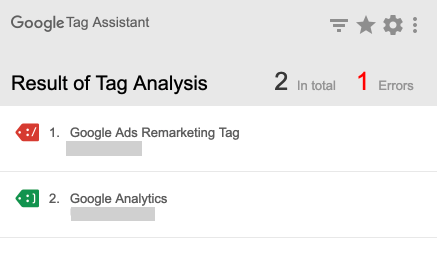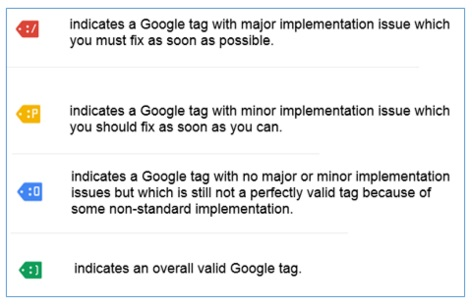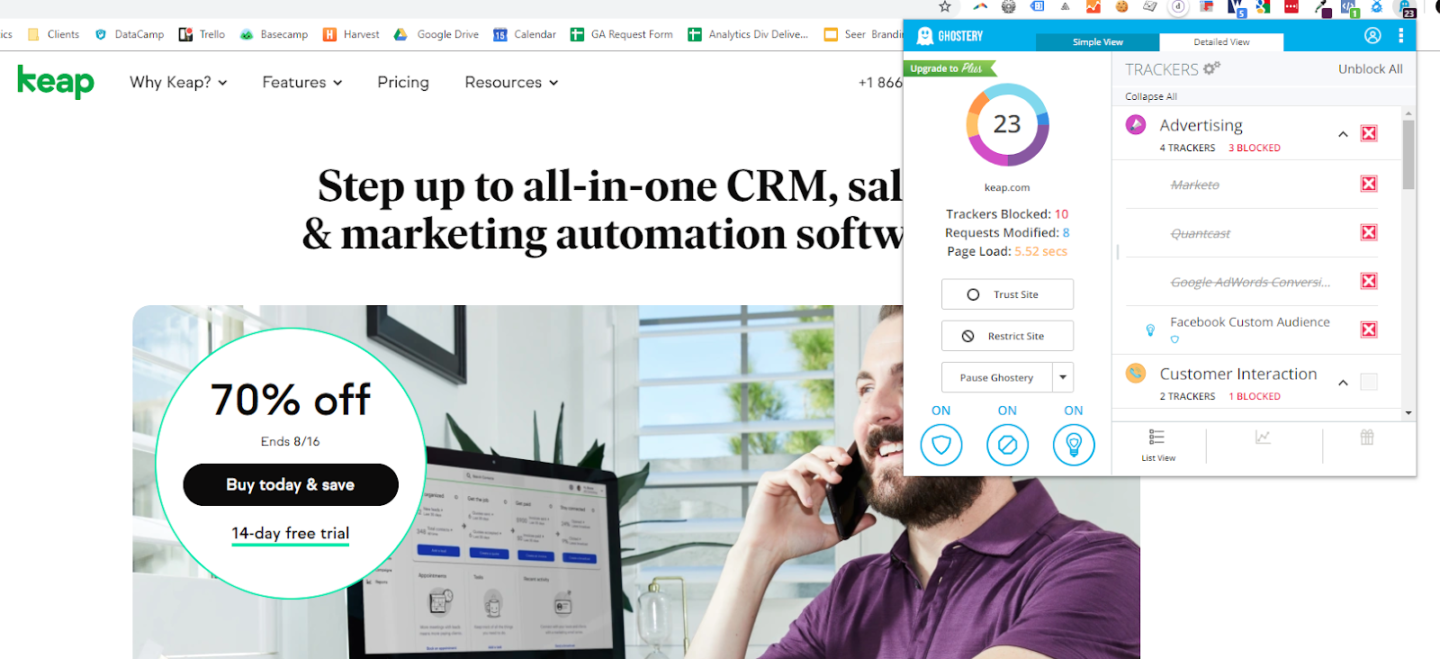Post originally written by a Seer Alumni in October 2019. Updated in April 2023 by Caroline Weisenhorn
You have two sites that you need to merge and you are busy checking off action items from your SEO Website Migration Checklist and Analytics Redesign Guide. But what does a migration mean for your PPC campaigns?
Too often, web developers underestimate the scope of a site migration and your PPC campaigns could suffer the consequences. In the worst-case scenario, your ad URLs redirect to the wrong pages, conversion tracking breaks, and paid traffic takes a nosedive. However, you can avoid all of this with ample planning and organization. Start by downloading this foolproof PPC Migration Checklist and share it with your team to account to plan for all potential roadblocks along the way. Read on to learn how to use it.
Before The Site Migration
Collect information & share
Before getting started with pre-migration tasks, take some time to compile all relevant information regarding the upcoming site migration.
- When’s it happening? What all is changing? Is there a plan for maintaining conversion tracking on the new site? Do we anticipate any roadblocks that could affect the timeline?
Not only is it good to be aware of all that is happening during a site migration, but by sitting down and considering all possible areas of impact, you may bring to light some unanticipated snafus to address. There will always be a hiccup or two, so giving yourself ample time to consider and address them is critical to keeping the project moving forward on time.
Once you’ve documented all known facts on the project, make sure to share it with all parties involved, most importantly, your PPC account management team.
💡 Pro Tip: Download the foolproof PPC Migration Checklist and share it with your PPC management team for a step-by-step guide on how to prepare the accounts for a seamless site migration + how to plan for all potential roadblocks along the way.
Map your existing ad URLs to new URLs
This is crucial! Create a spreadsheet that contains all of the URLs your ads and ad extensions are driving to and map them to your new URLs. This is a great opportunity to check if your migration site has all of the same landing pages or potentially new products/pages to expand your campaigns on. This spreadsheet will come in handy for switching out your ad URLs after the migration.
💡 Pro Tip: Download reports for ads and ad extensions to make URL mapping easier. You will also have a bulksheet ready for upload when the new site is ready. If you plan to launch new ads, you can upload them as paused and re-enable once the new site is live. If you are updating ads on Google and Bing, we recommend updating the current ad URLs, as opposed to launching net new ads, in order to preserve the ad performance history.
Ensure that the new site has the same conversion actions and corresponding tracking codes
Confirm whether or not your relevant conversion actions are changing in the new site. Some conversion actions to consider include: phone numbers, lead form completions, newsletter signups, and purchases. You will need to implement the conversion codes for these actions on the new site. If the new site will feature net new conversion actions, set them up in your relevant PPC campaign platforms and place the corresponding code on the new site.
💡 Pro Tip: To check all of the URLs currently firing on a conversion in Google ads, go to Tools > Conversions > Select a specific conversion > Webpages tab
Ensure that the new site is properly tagged with tracking codes
Is your new site properly tagged for conversion tracking and remarketing? Did you test the tags? Common tags include:
- Google Tag Manager (GTM)
- Google Ads
- Google Analytics
- Bing UET
- Bid management tools (Kenshoo, Marin)
- Remarketing (GDN, Adroll, Criteo and other platforms)
- Social Media (Facebook, Instagram, Twitter, LinkedIn)
- Call Tracking (Invoca, CallRail)
How to look for these codes on the site
- Right click on the page > Inspect
- Use CTRL + F to search for the following
- fbq = Facebook
- gtag = Google Analytics
- gtm = Google Tag Manager (GTM)
- uet = Bing
- hotjar = Hotjar
- crazyegg = CrazyEgg
Reference Google Tag Assistant or Ghostery to double check
Google Tag Assistant
- Download this Chrome Extension here.
- Click on the tool once you are on the client’s website and Enable the tool.
- Refresh the page to reload the tool, starting the information collection.
- Your results will look something like this:

- Here’s a guide for what the colors of the tag results signify:

- You may also use the Record function to rest multiple actions on the site like an Event or Goal (tied to the PPC conversion).
- Similar to enabling the tool for tracking, press Record and then refresh to record your interaction on the site.
- Once you are done, stop the recording to view your results.
Ghostery
- Download this Chrome Extension here.
- Click on the icon on your toolbar once you navigate to the correct page(s).
- You can use the simple or detailed view to see which tags are running and which ones are blocked.

Create new remarketing audiences based on the new site
If your site migration is going to a new URL (IE taco.com -> ocat.com), ensure that you create new page visit / site action audiences. You want to have the same audiences for the same page visits / site actions for your new site.
Test URL redirects
If your migration will be utilizing redirects from the old site to the new site, check that each URL is redirecting to the proper new URL based off the redirect map you created. If not, you will need to correct the redirects, or prepare your ads with new URLs to direct to the new site.
💡 Pro Tip: Use httpstatus bulk redirectinator spreadsheet to test all of your URLs at scale .
Ensure that your new site is mobile friendly
Try viewing the new site on your mobile phone. Is the site responsive? Does the layout and format look good on mobile? Is the navigation user friendly? Try using Google’s mobile site speed test to identify areas you can optimize.
If you are an e-commerce site, ensure that you have an updated feed
For e-commerce sites using Google or Bing Shopping ads, check that your feed aligns with the new site structure and create a new feed file with updated URLs ready to upload. If you are working with a feed management partner, make sure to involve them. Ensure that the Google Merchant Center verification tag remains present on your site. Check if your custom labels have transferred over.
Benchmark Performance
Establish performance benchmarks for your old site in order to compare performance on the new site. This will be helpful post migration if you notice a huge drop off in performance.
💡 Pro Tip: Use Setup automated rules in Google ads to get instant alerts when performance drops off. A couple handy ones we recommend include:
- Conversions = 0
- Conversion rate <= your benchmark CVR
If your site migration is because of an acquisition
Change the old brand name to new brand name across a new set of ads that you can upload after the switch. Consider running ads such as “Acme Corp is now Emca Corp” to inform your audience of the change. Ensure that any display creative reflects this change.
Implement a link checker script
If you are running Google Ads campaigns, implement this script that will check all of your keyword and ad URLs for 404s and alert you.
During The Migration
Have a plan for escalating issues
It's rare for site migrations to go smoothly. If you are a digital marketing agency account manager, make sure you have a direct contact with your POC and their web development team to report issues. Test out all of the relevant aspects of your landing pages: site navigation, conversion actions, links, etc.
💡 Pro Tip: If your urls are redirecting to unintended pages, create a spreadsheet to track all unintended redirects and what the correct URL should be. Share this with your web development team so that they can resolve these issues.
Pause all ads
Do not worry, this is only temporary. Your ads should remain paused until you and your web developers are confident in the site migration (ie all of the checks in the previous section). No traffic is better than sending traffic to an irrelevant page or a 404. When should you re-enable your ads? It depends on how long it takes to test the functionality of the new site. You want 100% confidence in navigation, usability, conversion flow / tracking, etc.
💡 Pro Tip: If the site is scheduled to go live at a specific time such as 2:00am, pause your ads at 1:30 am via automated rules and then revert them later in the morning after URL vetting is complete.
Update Google My Business (GMB) listings
Change the URLs listed on your GMB pages so that local actions and user experience aren't affected. Google Ads populates location extensions with information from GMB.
After The Migration
It’s important to remember that performance will likely be volatile in the beginning, as can be expected when campaigns are changed significantly. Your campaigns will likely be pushed into a learning phase for two weeks or so, as Google crawls the new site. While this is virtually unavoidable, there are other ways to help your campaigns bounce back a little smoother by avoiding some common missteps.
Relaunch your ads / upload the new shopping feed
After you are confident that the site migration was a success, and the site is ready for traffic again, feel free to unpause your ads, upload your new ads, and or upload your new shopping feed.
💡 Pro Tip: Set up Automated Rules in Google Ads and Microsoft Ads to send you an email in the instance that an ad gets disapproved.
Check that your ads are receiving conversions
Run a few test conversions and see if the data is populating in your PPC platforms.
Check changes in quality score and landing page relevance
If you have Google Ads campaigns, monitor how quality score and landing page relevance were affected after the migration. This will usually take a few weeks after the migration to get an accurate read. If quality score and or landing page relevance decreased, try changing up the copy on your new site landing page and ensure that it aligns with the keywords that you are bidding on.
Continue bidding on the old brand name and URL as keywords
If your site migration was because of a business acquisition, some people may still be searching for the old brand name and URL. Continue bidding on these as keywords until you no longer receive relevant traffic from them.
Seer Can Help
Download the foolproof PPC Migration Checklist and share it with your team to account for and plan for all potential roadblocks along the way.
Speak with a Seer team member today to learn how we can take your business to the next level.

